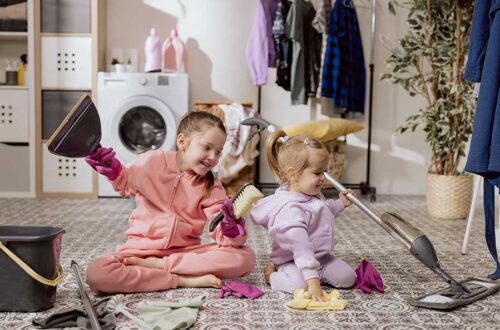
Family Meetings Can Be Meaningful and Fun
Have you ever run a business, led an event team, or organized a group of people with a common goal? If you experienced success, you probably shared ideas, problems were given time to be resolved, protocols were established, grievances were aired, appreciation was expressed and jobs divided. Am I right?
Whether it’s two people or twenty, families are an organization in need of all of those listed elements in order to be less chaotic, predictable, and, ultimately, an emotionally safe place to be. Family Meetings, Problem-solving sessions, Family Summit, Talk Time…whatever you’d like to call it, taking 10 minutes a week to focus on important aspects of household issues and maintaining healthy relationships between all family members is crucial.
I know what you are thinking. I thought the same thing. “I’m so busy. I don’t want one more thing to do that my kids will fight against.” I resisted establishing Family Meetings until the time came when I bit the bullet and did it. I discovered the single most helpful Positive Discipline tool that changed how my household ran. Without question, the time invested was worth it. My son was 7 years old and my daughter was 3 years old when I started and kept them going through the high school years. Currently in their 20’s, they reported to me that our meetings were, “a great way to communicate within our busy lives,” and that “we got to connect as a family and reflect on things that happened together.”
You want Family Meetings to be effective, right? First of all, Parents, take a back seat. This is not a power grab. Here are some guiding steps to create a mutually beneficial experience for all:
Do’s
Do keep a consistent meeting day and time
Do give everyone an equal vote.
Do decide on resolutions to issues by consensus, not majority
Do keep it short; address two or three items per meeting.
Do record in a notebook all solutions agreed upon for future reference (you’ll forget!)
Do post an area to write down agenda items as they arise during the week
Do follow an agenda: Appreciation and Compliments
Review past family meeting agreements and solutions
Discuss issues from the agenda generated throughout the week
Pick a family activity for future fun
Don’ts
Don’t overpower the conversation. As a leader, listen and reflect more than talk.
Don’t lecture, criticize, or focus on misbehavior. This is not the place for that.
Don’t problem-solve or discuss topics you are not open to children deciding. (e.g. parents decide on a vacation destination, while kids decide on certain activity options.)
Don’t rush the resolution process. If a consensus can’t be found, the issue is tabled. If issue is over an activity or item, it will not be available until a workable solution is agreed upon by all.
Beginning Steps
Get Buy In. Most kids will rebel at an adult’s invitation to come to a meeting. It sounds like a trap. You will need to build up their trust that they will have a true voice in the family.
With my family, I started with a simple invitation to work together to decide on some summer day trips. I laid out 3 ideas I knew my kids would enjoy and I could afford. For the next month, I only brought up issues they wanted to talk about. (e.g. she keeps climbing on my bed; he keeps tickling me and won’t stop.) We ended our meetings with dessert.
Explain the Purpose and Set Ground Rules. Again, I began with an open invitation. “I need your help to run this household and to decide things together. I want us to be a family that solves problems as a team. What are some ideas about how we can talk at our meetings respectfully?” Together we made a list and wrote it down in our Family Meeting Notebook to reference throughout the years ahead. (1. One person speaks at a time. 2. We listen while another person talks. 3. Stay at the table until the meeting ends. 4. No teasing, sarcastic, hurtful words; stay focused on solutions.)
Practice Appreciations. Start meetings with something positive like “thank yous” or nice observations. Compliments are a skill; model it and practice it. This may be all you do on your first meeting. Allow kids to pass if they choose; forcing appreciation is unsatisfying for all involved. They most likely will participate at another time.
Do problem-solving skill-building. Start with very simple problems to solve. State the problem (e.g. siblings constantly fight over touching each other’s things.) Don’t analyze the problem; go right to solutions. Write down all ideas even if it is outrageous. Select the one idea that works for everyone, kids and parents. (e.g. each sibling gets a box to store their own personal toys, the rest of the toys are communal.)
Family Meetings Agenda Items
Once Family Meetings are established after working out the tweaks, they can be used for a number of things.
- Sibling conflicts: a time and place to talk after a heated moment has passed, to listen to each other, to express frustrations, and to come to a win-win solution.
- Plan: activities, trips, meals, household chore rotations, and look at the week’s schedule of extracurricular activities.
- Accountability for all: a consistent structure keeps families on track with follow-through and review. Circle back, review agreements and how they are working or not working, and if new solutions are needed, a place where irritations and complaints can be addressed and not forgotten.
Benefits of Family Meetings
Teaches Life Skills and Models Core Values. The meetings teach how to listen and speak up, run an efficient meeting, problem-solve without getting stuck in the problem, compromise, understand another’s perspective, vent respectfully, and work as a team. It models the values of cooperation, commitment, capabilities, communication, and contribution.
Provides a sense of Belonging and Significance. Positive Discipline promotes these two core needs. Family Meetings literally give children and teens a seat at the table. Their participation, opinions, and ideas are necessary to the family unit.
Creates Connection. Builds strong connections because everyone feels heard, solutions are found, and things get done.
For more details about Family Meetings find the Tip Sheet at www.PDCRCC.org
Colleen Murphy is a credentialed adult ed teacher, a Certified Positive Discipline Trainer at Positive Discipline Community Resources (www.pdcrcc.org), a preschool teacher at Soquel PENS (www.soquelpens.org), a parent coach (fromtheheadtotheheart.com), and in healthy relationships with her two grown kids.






